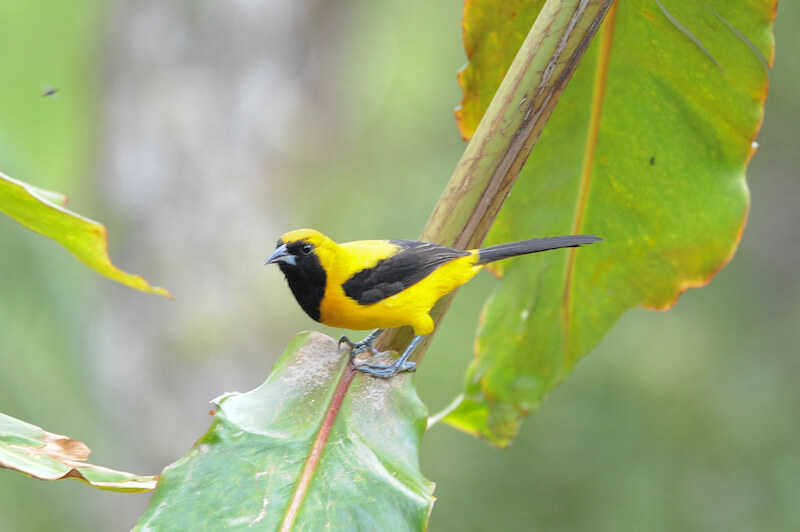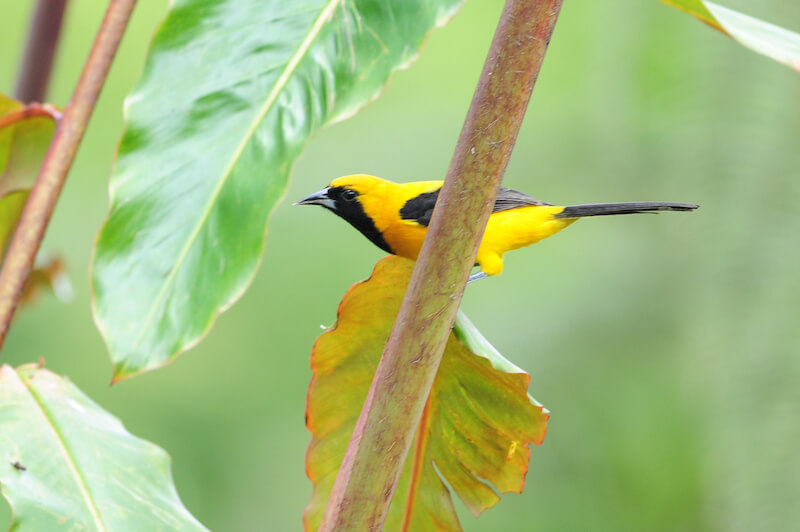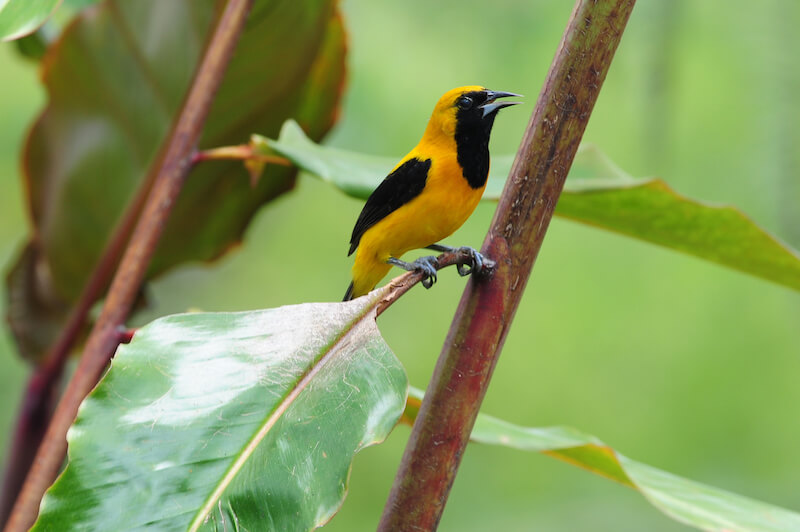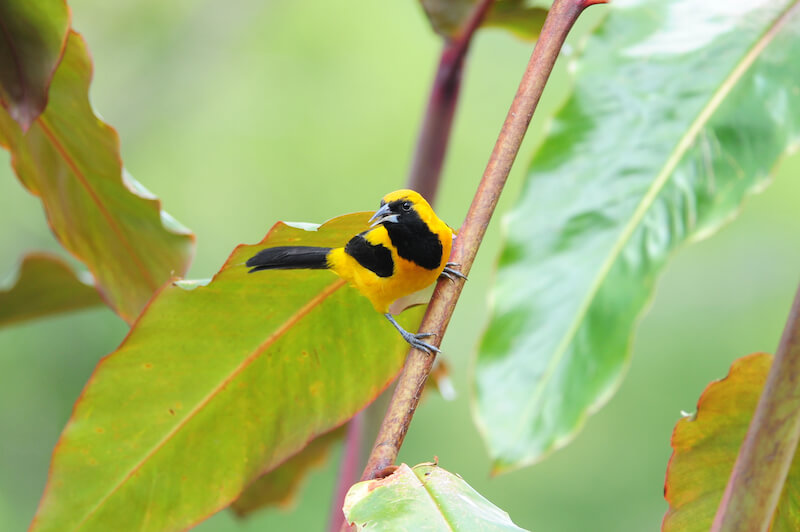Yellow-backed oriole
Turpial Montañero o CALANDRIA negra y amarilla
Icterus chrysater
The medium-sized Yellow-Back Oriole measures from 21 to 24 cm (8.2-9.5 in) from bill to tail; male weighs 51·8 g (1.3 oz), and female 48·7 g (1.7 oz). It tolerates a wide variety of environments but prefers dry lowland deciduous forests and mixed open woodlands. They adapt well from lowland to altitudes up to 2700 m (8900 ft). It shows only two contrasting colors: black and yellow. The male is golden-yellow with a contrasting black forehead to throat and upper breast. It is one of the very few species of orioles with a yellow back. The wings are black, and the feathers lack the white margins present in other orioles. In pairs or social groups of 8 or more. Black bill with a bluish-gray inferior mandible. Legs are bluish-black. Juveniles have an olive eyeline. Orioles feed on arthropods. The nectar of Heliconia and Ochroma is obtained by puncturing the base unopened flowers. Both male and females sing clear notes while perching high on trees. Monogamous: breed once a year with a single partner. Shallow basket-looking nests built high in tree limbs or in palms. Nests are woven with fine fibers. Eggs are white with brown lines.
Este turpial negriamarillo o calandria mide de pico a cola de 21 a 24 cm. Peso promedio de 52 y 49 g en el macho y la hembra, respectivamente. Tolera una amplia gama de ambientes, prefiere los bosques de clima seco y abiertos. Se adaptan a bajas y altas alturas hasta 2700 m. Su cuerpo muestra solo dos colores que contrastan: dorado y negro. Espalda de plumaje amarillo. El macho es amarillo con color negro desde la frente a la garganta e incluye la parte superior del pecho. Alas negras sin márgenes blancas en sus plumas como las tienen el resto de orioles. Se encuentran en pares o en grupos hasta de 8 o más. Pico negro recto y puntiagudo con mandíbula inferior azul-grisácea. Las patas de color azul-grisáceo. Los juveniles tienen una línea ocular color olivo. Comen artrópodos y toman néctar que obtienen punzando la base de las flores de Heliconia y Ochroma sin abrir. Cantos claros, rico en silbidos y melodiosas notas que emiten desde lo alto de los árboles todo el día. Monógamas: crian una vez al año y mantienen un solo compañero. Nidos en forma de canasta que cuelgan de las ramas. Huevos blancos con líneas castañas.

LM1_8706

LM1_8708

LM1-8730

LM1_8731

LM1_8734

LM1-8710
